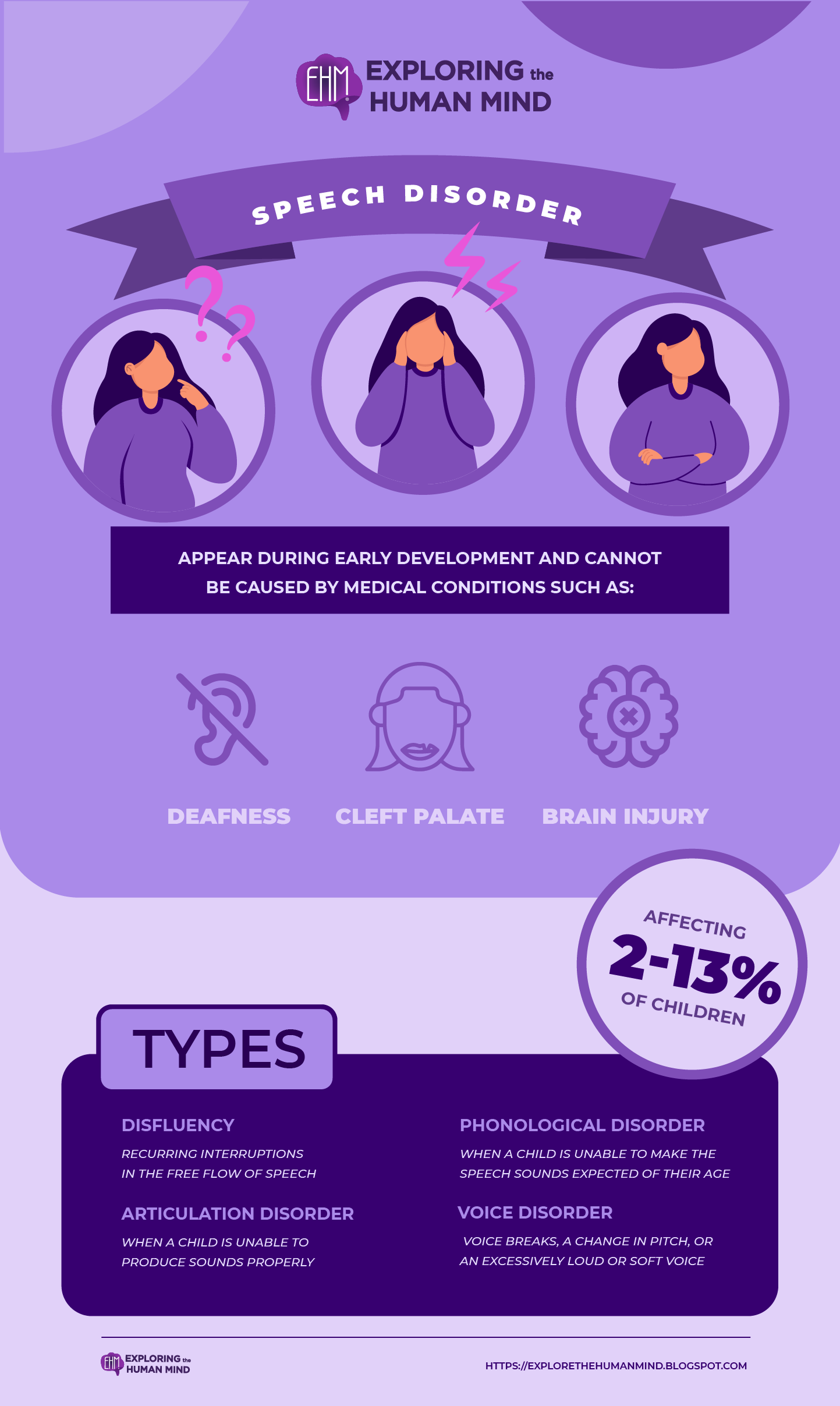Speech-sound disorder
Speech developmental disorders may indicate motor speech difficulties. In this case, a child has difficulty moving the muscles required for speech production. This child may also have poor coordination when speaking. Speech sound disorders are identified when speech patterns do not match the movements/gestures made while speaking.
Speech impairments are a common early childhood occurrence, affecting an estimated 2% to 13% of children.Children with these disorders may have difficulties reading and writing. This can have an impact on their expected academic performance. Language conditions such as specific language impairment (SLI) are frequently confused with speech sound disorders.

vectors by Freepick; graphic design by Vadot
Causes of Speech Sound Disorders
There is no known cause of speech sound disorders. However, several risk factors may increase the odds of developing a speech challenge. These include:
- Gender: Male children are more likely to develop a speech sound disorder
- Family history: Children who have family members who have speech disorders may face a similar challenge.
- Socioeconomics: Being raised in a low socioeconomic environment may contribute to the development of speech and literacy difficulties.
- Pre- and post-natal challenges: Obstacles encountered during pregnancy, such as maternal infections and stressors, may increase the likelihood of a child developing speech disorders. Similarly, complications during delivery, premature birth, and low birth weight may result in speech disorders.
- Disabilities: Down syndrome, autism, and other disabilities may be linked to speech-sound disorders.
- Physical challenges: Children with a cleft lip may experience speech sound difficulties.
- Brain damage: These disorders can also be caused by an infection or brain trauma in a child. This is seen in conditions such as cerebral palsy, where the muscles responsible for speech are injured.
Types
By the age of three, a child should be able to understand at least half of what they say. Most sounds should be pronounced correctly by the ages of four and five, with the exception of "l", "s", "r", "v", and other similar sounds. Harder sounds should be properly pronounced by the age of seven or eight. A child with a speech sound disorder will struggle to pronounce words even after reaching the expected age. Difficulties with speech patterns could be indicative of one of the following speech sound disorders:
- Disfluency: CThe most common type of disfluency is stuttering. It is known for recurring interruptions in the free flow of speech. A child with disfluency will still repeat words or phrases while speaking after the age of four. When communicating, this child may include extra words or sounds; they may also lengthen words by emphasizing syllables.
This condition may cause tension when speaking. Disfluency may also be accompanied by head jerking or blinking.
- Articulation Disorder: When a child is unable to produce sounds properly, it could be due to incorrect placement, speed, pressure, or movement of the lips, tongue, or throat. This usually indicates an articulation disorder, in which sounds like "r," "l," or "s" are altered. Only close family members may understand a child's communication in these cases.
- Phonological Disorder: When a child is unable to make the speech sounds expected of their age, they have a phonological disorder. When producing sounds, errors may occur. Other sounds, such as consonants, may be omitted when speaking.
- Voice Disorder: When a child's voice is raspy, this could be an early sign of a voice disorder. Voice breaks, a change in pitch, or an excessively loud or soft voice are also indicators. This disorder may also affect children who run out of breath while speaking. Similarly, children with voice disorders may sound nasally or have insufficient air coming out of their nose.
In some cases, children may have problems with both expressive and receptive language.
These children have trouble both using and understanding language.
Reference:
What to Know About Different Types Communication Disorders. Verywell Mind. (2022) https://www.verywellmind.com/communication-disorder-types-5220602#toc-types-of-communication-disorders https://www.facebook.com/verywell. (2022). How Are Children Affected by a Speech Sound Disorder? Verywell Mind. https://www.verywellmind.com/speech-sound-disorder-types-causes-treatment-5220400
How Are Children Affected by a Speech Sound Disorder; Verywell Mind. (2022). https://www.verywellmind.com/speech-sound-disorder-types-causes-treatment-5220400






Comments
Post a Comment